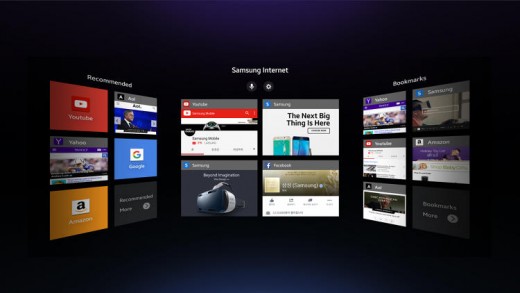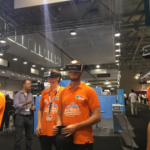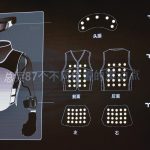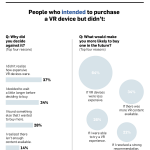Why A digital truth web could never occur
What if you must browse the online in virtual truth? just imagine the possible. Hyperlinks might take you to not Wikipedia pages about history, however proper to the landscapes of historical cultures, immersing you in plagues and artwork and conflict. Recipe sites may give you smell-o-vision cooking simulations. Message boards might change into face-to-face chats. the net as we comprehend it may transform tangible, interactive, and extra immersive than ever.
in truth, you can browse a VR net lately—in the event you personal an Oculus, HTC Vive, or Samsung equipment headset. however there’s a seize. It’s now not superb. And it is not what you’ll call a “web.”
Casey Yee, UX design engineer at Mozilla, is the primary to admit its shortcomings. His six-person group has created the WebVR usual, a JavaScript usual that enables customary websites, with the rush of a button, to transform into unbelievable 3D landscapes that you simply experience in VR.
think about being on Amazon, tapping a button, and loading a digital shopping center with clothes that you may actually are trying on. the possible is plain, but we’re no longer there yet. No main web pages are the usage of the expertise. And the web sites that do—that are mainly tech demos—aren’t but woven collectively thru hyperlinks like our internet is now. instead, there just discrete interactive experiences you can really best in finding at very specific URLs.
So why are we even speaking about it? WebVR if truth be told works very well, and it is quick changing into the business same old. Google has adopted the expertise for a cause: These VR experiences load straight away, and they’re clean. One 2nd you’re taking a look at a typical site. the following, you are riding a three-D curler coaster that can make your stomach drop.
but as Yee explains, we’re still a ways from a turning these individual demos into a real, interconnected net you can surf in full virtual truth. And until more people get entangled, it’s conceivable we won’t ever see this sort of thing.
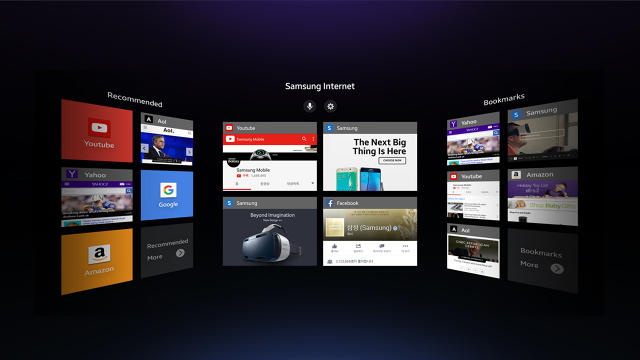
The UX wants a complete New Set Of Metaphors
the online is a UX problem that’s largely been solved. you’ve websites. Hyperlinks. movies. each and every piece of media clearly understood via customers to permit senseless browsing.
at the moment, builders of internet VR have largely just transferred those metaphors to a headset. imagine how this appears to be like on the Samsung gear VR. a totally conventional net interface floats one window in entrance of your eyes—like a pixelated screen—and that you may aim your head and tap to vary the URL, go to a website on your history, and visit hyperlinks. looking out is especially smartly handled, made even more straightforward for the reason that machine permits voice search in lieu of typing.
It feels commonplace! That alone is an incredible accomplishment of the consumer interface. nevertheless it additionally feels, maybe, a bit too normal? There’s nothing inherently superb about searching the identical web you know simply because you’re inside a virtual truth headset. in reality, it’s inherently worse. The digital monitor is no better than your actual one. the kind is in fact slightly a bit of more pixelated than it is on any up to date monitor. The expertise is quite a bit like trying the Oculus Netflix app: enjoyable that it really works, but additionally, not as good as just gazing a film in your laptop or television.
but a real VR web would seem to be completely different, wouldn’t it? as a result of it’s essential to walk round, touch content, and notice information in 360 levels of view.
“We’re wondering, what is a hyperlink going to appear to be in VR—the blue underlined hyperlink in textual content works on a page. That’s the established order. but what does that appear to be in VR?” Yee asks. “Is it a portal? Is it a bounding field round an object. Do you stroll as much as it? Do you touch it? There are all varieties of questions around what that looks like in VR.”
at this time, that you may simplest get the slightest of tastes of this future. On some websites enabled with WebVR, a button will seem that claims “view in VR.” tap this button, and, straight away, the 2-D web page will fill your imaginative and prescient with a whole 3-d, interactive world. It’s exceptional. although my butt was once in a very easy chair with my computer burning scorching on my thighs, I still felt pangs of stomach drops as I rode backwards on this silky smooth, yellow curler coaster surrounded in pixel artwork bushes and skyline. of course, this demo wasn’t on any site you would recognize; it was once buried in a directory of demos.
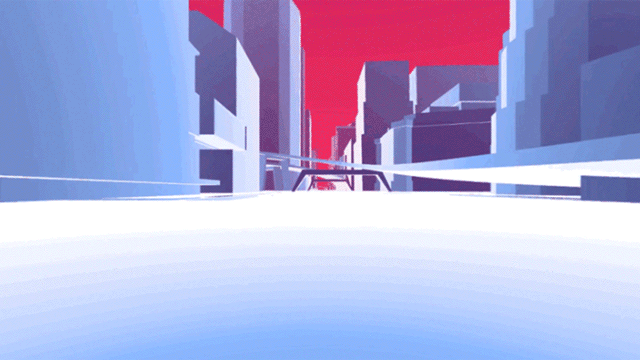
alternatively, if you dig for the handful of pages on the net which can be in truth enabled with this technology (learn: none you realize), it can be hugely pleasant. In any other demo called Cubes, I was once stuck inside a large black hangar. round me, colorful boxes floated around at random—charming, even if i could not do anything else more than sit down there and appreciate the technical marvel of this large 3D screensaver.
but the cognitive divide between this VR web—of loopy 3-d simulations that would possibly sooner or later be hyperlinked collectively like magical, related universes—and a 2-D version of Amazon.com that floats in front of your face—is a major inventive valley to cross in the development group.
“Early on when we started the WebVR product at Mozilla, a couple years ago now, we were literally considered as the loopy individuals. people couldn’t wrap their heads round why we’d want the net in VR. they just imagined the browser tabs floating in entrance of you. And that appears to be the view individuals took of it,” Yee says. “it’s a must to inform people, that’s now not what it’s going to look like. should you wanted to have a look at the net in 2-D in entrance of you, you’re better off with your pill or computer. We think about the VR internet as, you’re now not viewing an online web page, you’re in it. That’s unbelievable.”
Most internet developers shouldn’t have the talents To Create VR
Assuming that you could persuade an HTML web developer that they should be building digital truth web sites—simply by sheer awe factor—there’s still a major problem: The expertise wanted to build a traditional web site is completely completely different from that wanted to building an interactive setting.
“you have got an enormous population of developers that take note and be aware of find out how to work 2-D webpages. however none of these individuals are specifically neatly suited to creating VR content material,” Yee says. “That’s an immense issue. That ability set is very new to these people. Whereas for gaming [developers], it simply form of fits them.”
In flip, the Mozilla workforce has launched a platform called A-body. A-frame is designed to accommodate internet developers who’re versed in HTML and CSS, but have but to delve into three-D models and OpenGL.
A-frame has had some early success, with lots of interested individuals on Github, and the Washington publish lately used A-body to construct its interactive demo of the outside of Mars. however instruments don’t robotically equate to skill units. Even understanding A-body, there’s no the reason is, the best way information flows through 2-D house holds all that a lot similarity to how it operates in 3-d space. So developers may nonetheless have loads to study.
A VR web requires web builders—formerly involved about which TypeKit font will work easiest for a consumer—to be recreation designers, three-D modelers, sound designers, experience designers, and more. until there’s a marketplace for these experiences, there gained’t be investment. unless there’s investment, there won’t be talent. And, in a full ouroboros, except there are abilities, there gained’t ever be a market.
Apple, Google, And fb Have Already Lured Us far from the online
So let’s suppose we attain essential mass of three-D-prepared net designers—what then? We face but any other drawback to developing our VR internet. namely, that the web as we know it is essentially disappearing.
“numerous companies, like Google and Apple, have their own ecosystems—and they need native apps because they can keep an eye on the whole worth chain,” Yee says. “Whereas with the net, it’s a little extra open than that.”

Yee isn’t unsuitable. the best contemporary instance may be facebook’s speedy Articles. whilst you read any such articles on facebook—perhaps by the ny occasions or BuzzFeed—you aren’t looking the quirky open web that everyone knows. You’re reading content that’s been printed natively, on facebook, both cached and monetized inside of its personal little mini net. You’ll read content material from different fb users. And you may even learn different articles instructed by way of fb. but you’ll never leave fb, and no more and less will you ever be visiting the web outdoor of it.
It’s no surprise that facebook has even hinted that it sees a metaverse in our future—a completely interactive VR world, with actual streets and people, something corresponding to what an open VR net might seem like. but crucially, that may be facebook’s metaverse, no longer a web ruled by way of democracy. And on condition that we’re all striking out in fb’s app anyway, will we put the vitality into building some other VR world where our underutilized web once stood? “I see that, sure, the WebVR Metaverse must occur,” Yee says. “whether it will is some other question.”
indeed, we’ve already given up regulate of our open news to the taste-making algorithms of fb and Twitter. We’ve already given up our open tool to the tightly controlled app markets of Apple and Google. in this brand new world, there’s little impetus for a painstaking effort to rebuild the web in virtual fact, because we’re all going to choose to be a part of whatever VR expertise the larger firms are coordinating as a substitute.
And that’s a disgrace. as a result of as I are attempting more than a few VR website online demos on this gear VR, while many won’t load as a result of Samsung sort of botched the rollout, I’m still coming into environmental simulations sooner than most YouTube clips want to buffer, with objects that feel extra real than anything I’d ever seen on my previous personal computer net.
abruptly, it’s so painfully obtrusive: once about 1,000 totally different problems of user interface design are solved, and when we find out how VR can break the old browser “window” metaphor, browsing the web actually will be a commute again. If someone remembers what the web was once like when that day comes.
Will Oculus Rift and different VR corporations ever be about extra than simply fun and video games?

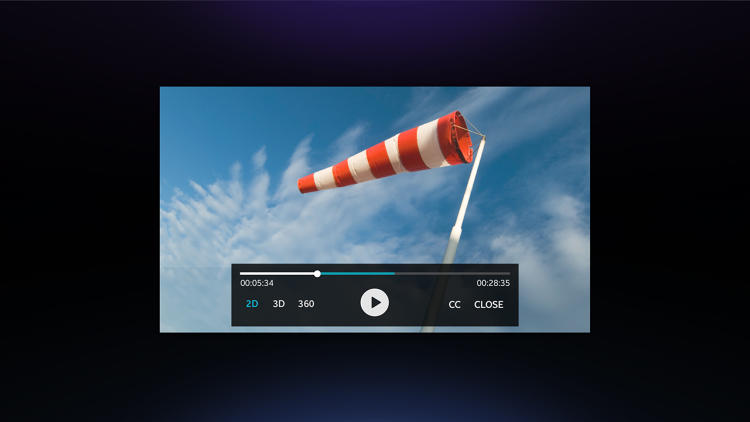
(15)

